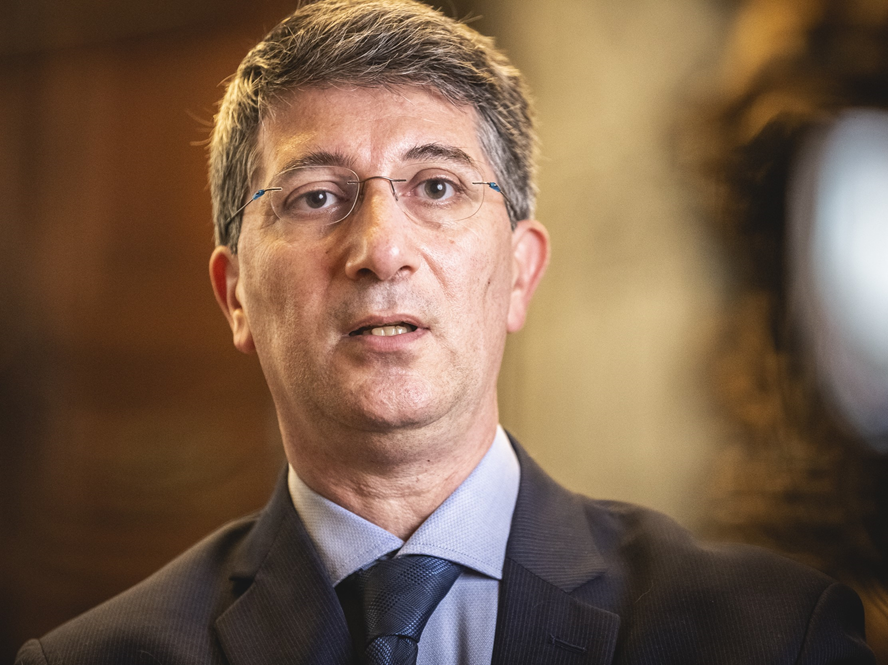By Muskan Arora
Italy’s $18B (€16.5B) Inarcassa is boosting exposure to value-add real estate while doubling down on Europe’s energy transition space, as it retools its private markets playbook.
Within real estate, the pension fund is eyeing core and core plus strategies, with approximately 70% Italian exposure — particularly in high-quality properties in prime urban locations such as Rome and Milan, said Alfredo Granata, the general manager and former chief investment officer at the pension, in an interview with Markets Group.
The fund has now consolidated direct holdings into fund structures, working exclusively through third-party managers.
“We’ve exited direct real estate management,” said Granata. “We rely on fund units now — and only partner with managers who bring sector-specific insight and strong environmental, social and governance credentials.”
Inarcassa has carved out a dedicated “Real Assets Italy” allocation, which includes venture capital, private equity, private debt, and infrastructure, with both direct and indirect exposures. Notable examples include strategic stakes in Enilive, Telepass e Fibercop, as well as indirect investments in key national infrastructure such as highways and airports. Granata also highlighted partnerships with leading institutional investors including Cassa Depositi e Prestiti, EIF, and European Investment Bank, noting a close collaboration with other pensions to “support domestic growth.”
The table below depicts the FY25, one-, three- and five-year returns of the pension plan — Source: Inarcassa
| Period | Portfolio | Benchmark |
| 2025 (YTD up to the end of July) | 3.5% | 2.2% |
| 2024 | 7.7% | 8.1% |
| 3Y – 2022-2024* | 2.0% | 3.3% |
| 5Y – 2000-2024* | 3.1% | 4.4% |
Inarcassa has taken a step back from U.S. equities since U.S. president Donald Trump imposed steep tariffs on European goods in April.
“We are gradually rebalancing,” said Granata. “European equities currently offer more attractive valuations, a more predictable policy environment, and a credible energy transition framework. This isn’t just a Trump reaction — it’s a fundamentals call.”
Granata also flagged heightened interest in defense-related investments across European pensions in recent years.
“We’re not ruling it out,” said Granata “We don’t consider defense automatically investable. We assess every opportunity with deep due diligence — especially dual-use technologies, human rights risks, and governance transparency.”
Within infrastructure, Granata pointed to high-conviction opportunities in grid modernization, energy storage, electric vehicle charging, as well as water and waste infrastructure. “Digital infrastructure outside the mainstream — like fiber networks and edge computing — is still underinvested. We see enormous potential there.”
“These benefit from public investment and regulatory support, and they’re essential for the transition to low-carbon cities,” added Granata.
The fund will continue to pursue both Italian opportunities — via funds and direct co-investments — and international funds with global or pan-European exposure.
In terms of private debt, Granata said the fund has re-focused its investments toward senior, junior, and mezzanine layers to enhance returns. However, he noted the pension fund stays away from distressed debt, noting this area doesn’t align with its liability-driven strategy.
Historically, through its private debt portfolio, the pension plan has been focused on investments direct lending funds, with a historical concentration in senior unitranche loans. This approach emphasizes capital preservation and steady income by lending to mid-market companies with solid credit profiles, noted Granata.
In the last few years, Granata highlighted that the pension has slightly diversified its strategy, seeking junior debt and mezzanine tranches, to enhance yield while maintaining controlled risk exposure. The capital allocation mostly sees generalist private debt funds, which are not sector-specific, allowing for broad exposure across industries and increased portfolio diversification.
“Senior unitranche strategies are proving effective because they offer a solid balance between return and risk protection,” said Granata. “These loans combine senior and subordinated debt into a single tranche, simplifying the structure for borrowing companies and providing investors with attractive yields at relatively low risk.”
On the private equity front, the pension plan is doubling down on mid-market buyouts and sector-diversified co-investments. “We’ve moved away from FoFs in venture,” said the general manager. “Now we’re backing diversified VC funds directly, especially those focused on the Italian tech ecosystem. It’s a more efficient and impact-driven approach.”
From fiber-optic infrastructure to early-stage venture capital, Inarcassa is positioning itself for long-term resilience — with a firm grip on ESG, geopolitical risk, and portfolio diversification.
Citing reduced merger and acquisition activities with difficult exits, Granata opportunistically assesses direct secondary transactions — both on the buy and sell side —to capitalize on attractive pricing and liquidity windows, while also allowing for dynamic portfolio management.
On the liquidity side, the pension’s holdings include Italian government bonds and a diversified portfolio of listed equities, amounting to more than €1.28B as of December 2024, or 8.1% of total assets. These include major companies such as Intesa Sanpaolo, Italgas, Terna, Banco BPM, Eni, Snam, A2A Life Company, and BPER Banca Group.












